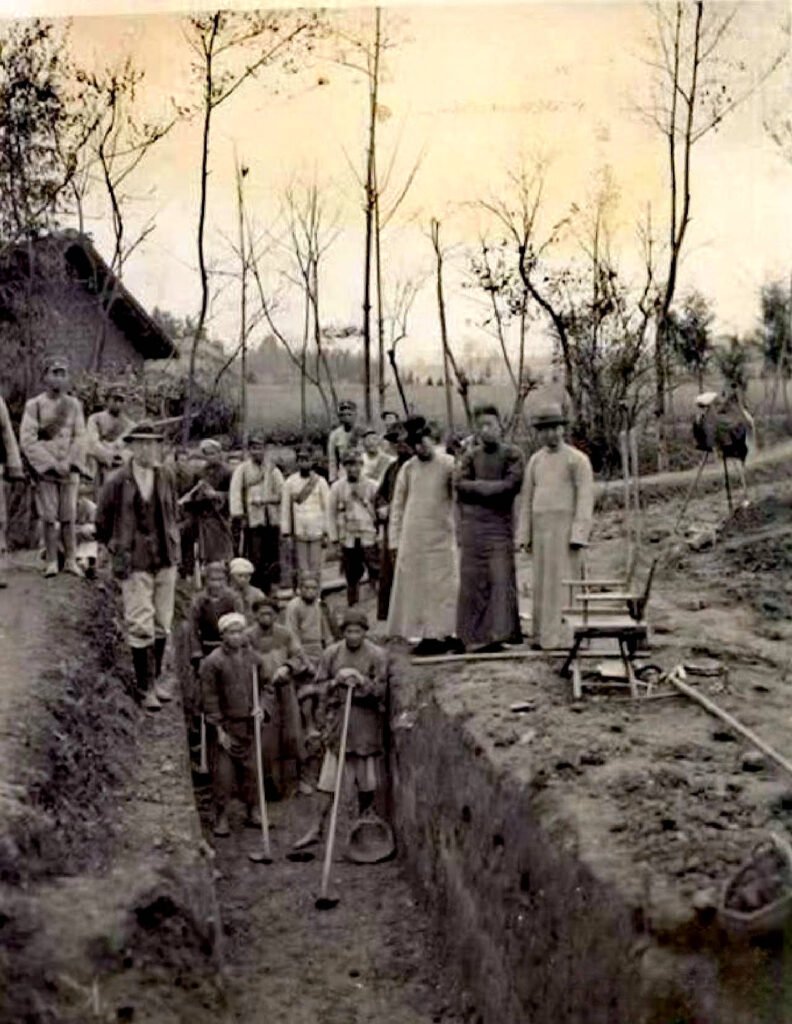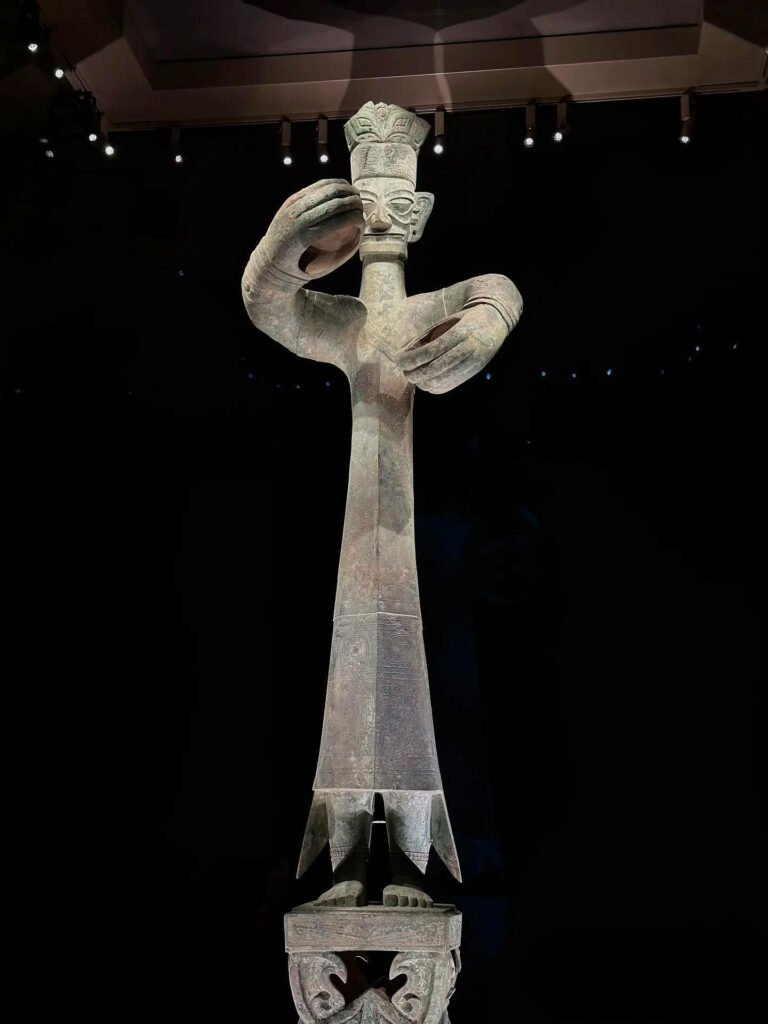My name is Huang Jin, born and raised in the shadow of the ancient city walls of Guanghan, Sichuan. For generations, my family tilled the soil near the winding Yazi River, never suspecting that beneath our feet lay a civilization that would rewrite history. The story of Sanxingdui artifacts isn’t just archaeology to us; it’s the awakening of our ancestral memory.

The Accidental Revelation: A Farmer’s Plow and a Global Earthquake (1929)
One February day in 1929, local farmer Yan Daocheng and his son were digging an irrigation ditch in Moon Bend (Moon Bay), their hoes striking something hard—a stone slab. Beneath it lay a cache of over 300 jade and stone ritual objects, glowing with an otherworldly light. Fearful yet awed, they hid the treasures, later selling some in Chengdu’s antique markets. This triggered a frenzy of looters descending on our quiet fields.
The true significance emerged when a local warlord, Tao Zongkai, showed some pieces to American scholar David Crockett Graham from West China Union University. Graham immediately recognized their antiquity, leading to the first scientific excavation in 1934. Though halted by war in 1937, this marked the birth of “Guanghan Culture”—a name echoing through decades before “Sanxingdui” claimed its place in global consciousness.

Why Sanxingdui Rewrites Civilization’s Narrative
Spanning 12 square kilometers with a core urban area of 3.6 km², Sanxingdui flourished from 2800 to 1100 BCE. Its discovery shattered three myths:
- The Isolation Myth: Once deemed a “closed” periphery, Sanxingdui artifacts reveal trade links with the Yellow River civilizations. Bronze vessels like zun and lei mimic Shang designs, while jade zhang blades reflect ritual exchanges.
- The Timeline Myth: It pushed Sichuan’s history back 2,000 years, proving the Yangtze River rivaled the Yellow River as a cradle of Chinese civilization.
- The Uniformity Myth: Its iconography—protruding-eyed masks, bird-headed figures—showcases a distinct cosmology. As archaeologist Su Bingqi noted, early Chinese civilization was “scattered stars,” and Sanxingdui was a supernova.
Icons Cast in Bronze: The Soul of Sanxingdui
Walking through the Sanxingdui Museum, I feel the gaze of these masterpieces:

- The Bronze Standing Figure (2.62m): Unearthed in 1986, this towering “King of Bronze Statues” stands barefoot on an elephant base. His hollow hands once gripped an object—possibly ivory or a ritual staff—lost to time. His layered robes, adorned with dragon motifs, suggest supreme spiritual authority.
- Protruding-Eye Bronze Masks: These hypnotic faces, with pupils extending like telescopes, may depict the shaman-king Cancong described in ancient texts. Some scholars link the “protruding eyes” to astral worship or altered states of vision.
- The Bronze Sacred Trees: One reassembled tree stretches 3.95m, branches blooming with birds and fruit. It embodies the fusang tree of myth—a ladder between heaven and earth.
- Gold Scepter & Sun Wheel: A 1.43m gold scepter, etched with fish and birds, signifies kingship. The enigmatic “sun wheel” (85cm diameter), once misidentified as a chariot wheel, likely symbolizes solar deities.
- 2021’s Golden Mask (28cm): Found crumpled in Pit 5, this 85% pure gold relic retains traces of crimson pigment. Its sharp nose and hollow eyes mirror bronze counterparts, confirming ritual uniformity.

New Pit Revelations (2020-2024): The Story Continues
Recent excavations uncovered six new sacrificial pits near the 1986 site. Among 4,000+ finds:
- A bronze altar with intertwined figures
- Twisted kneeling statues tattooed with cloud patterns
- Dragon-themed scepters, aligning with 2024’s zodiac symbolism
- Silk residues proving advanced textile technology

These discoveries confirm Sanxingdui’s deliberate ritual closure: artifacts were burned, shattered, and buried in precise layers—a “farewell ceremony” to a declining kingdom.
Guardians of the Past: Guanghan’s Living Heritage
Today, our Sanxingdui Museum (expanded in 2023 to 54,400 m²) cradles these wonders. As visitors marvel at the Sanxingdui artifacts, I recall my grandfather’s words: “We farmed where kings prayed.” Each bronze grain, each jade blade, whispers that Guanghan—once a forgotten river town—helped unveil China’s pluralistic soul.
“Scattered, we are stars; gathered, a blazing fire.”
— Archaeologist Su Bingqi on China’s cultural origins.

The hometown of Sanxingdui is Guanghan. Guanghan is not only rich in Sanxingdui cultural relics, but also the region with the most concentrated hot pot industry in China. Welcome to my hometown, Guanghan. I work in Guanghan related to hot pot. We have our own hot pot factory. If you are interested, you are welcome to communicate with me.

